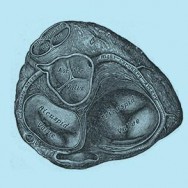
MitraClip Implantation
Background
The mitral valve controls blood flow between the chambers on the left side of the heart, which pumps oxygenated blood to the body. There are two main problems that can occur with the mitral valve: it can become too narrow (stenosis), or it can leak (regurgitation). Abnormal blood flow through the valve will then cause the heart to work harder, and eventually lead to heart failure. Symptoms of this include shortness of breath, light-headedness, fatigue, chest pain or palpitations.
In patients with mitral valve regurgitation who are not suitable for open surgery, MitraClip is a minimally-invasive alternative that may be possible.
About the surgery
The procedure is done under general anaesthesia. A catheter (a thin tube) is inserted into the femoral vein in the groin. The left atrium is accessed across the septum between the right and left atria. Once in the heart the catheter travels across to the left side of the heart and the mitral valve. The MitraClip is used to catch the leaky parts of the mitral valve, and it is tested to ensure the leak is reduced. This creates a “double orifice” that the blood flows through.
The clip is then secured in place and stays in the heart so that the valve continues to close tightly. The catheter is removed. The whole procedure takes about 2 – 4 hours.
Recovery period
Patients usually stay in the intensive care unit for 1 day for monitoring, and then in the nursing unit for 3 – 4 days. Full recovery usually takes about 2 weeks. Your surgeon will provide specific guidelines for your recovery and return to work.
Risks of the surgery
MitraClip is generally performed in patients who are too high-risk for surgery. However there are still some risks associated with the MitraClip, including damage to the heart during implantation, some residual leak in the mitral valve, the need for later surgery if the mitral valve still does not function correctly, bleeding, arrhythmias and pacemaker implantation, and a very small risk of death. There are also some minor risks of infection and bleeding in the groin where the catheter is inserted.
For more information please visit:
Cleveland Clinic Percutaneous Valve Interventions
All patients should consult their cardiothoracic surgeon for specific information about their medical condition and surgery.

